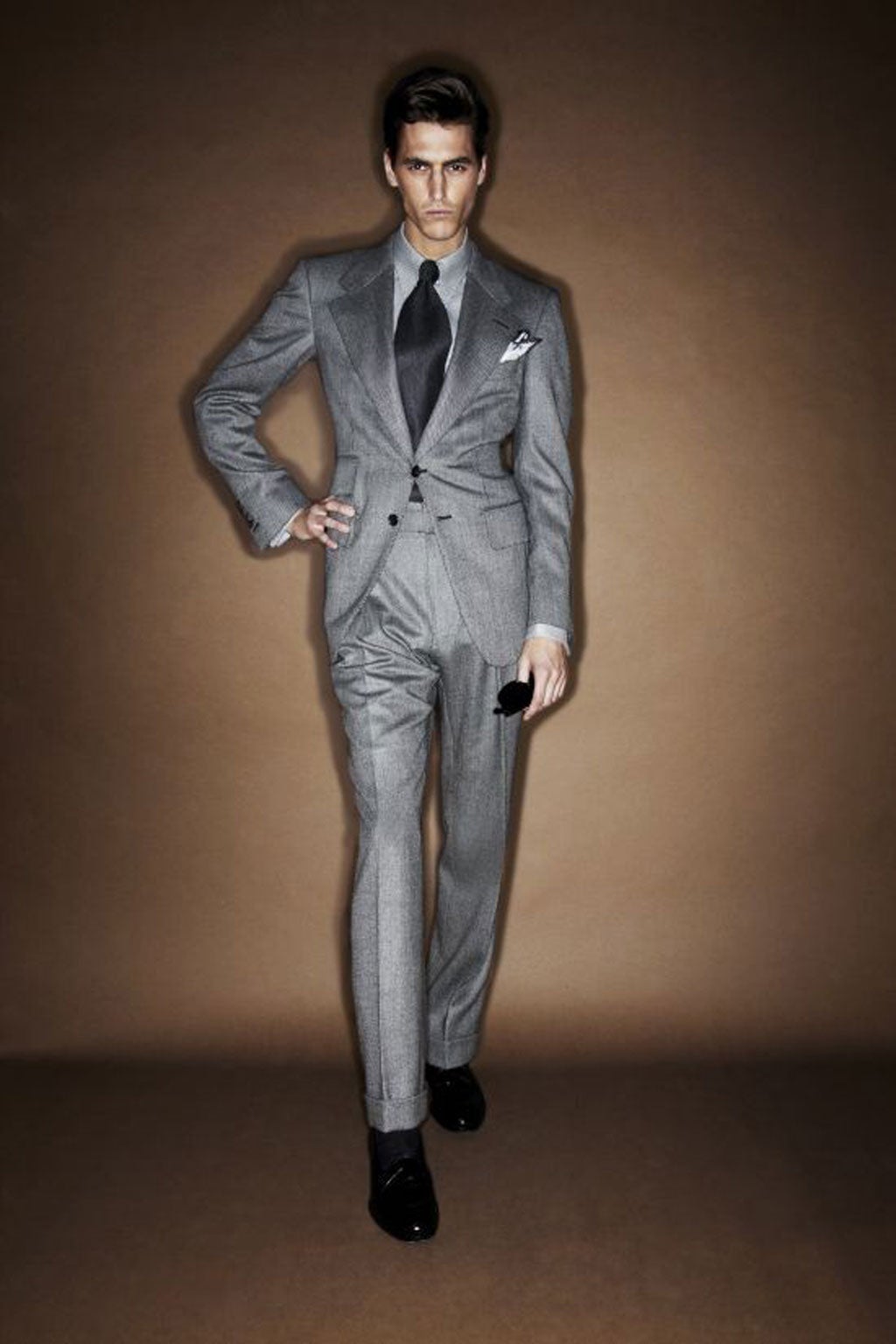Anatomy of a suit: How to make a suit the keystone of your wardrobe
Any Tom, Dick or Harry can put on a suit, but it's attention to detail that will make you stand out from the crowd. Whatever your job, a suit can be used as a keystone of your wardrobe. But how much to spend? What colour? Which collar? What cuff? Lee Holmes has the answers

Jacket
The fit of a suit is key. Whether you're spending £300 or £3,000, if you nail the fit the rest should fall into place.
Perhaps opt for a smaller jacket size than you usually take, to instantly nip in your waist and improve your posture. Remember that an excess of fabric will swamp.
And although the cut of the jacket should hug your shoulders, you should still be able to fasten it without it straining at your chest. The crop should sit on the hip: any longer you'll like a toddler who's borrowed a blazer from his father. Two side vents in the jacket will get you an A* for effort, whereas jacket collars should never stand away from the collar of your shirt. See your suit as a piece of body armour, toning and buffing along the way.
Lapel
A suit lapel should measure about two inches at its widest point, and as a general rule of thumb, lapels should always err on the side of narrow. But with the slow re-emergence of the peak lapel this, as with all fashionable concerns, is subject to change. The peak style is elegant and sophisticated –perfect if you want to live your life as a flamboyant waster in a 1980s Bret Easton Ellis novel.
Buttons
The number of buttons on your jacket can act as a barometer of how stylish you actually are; single-breasted two buttons are a classic (fasten the top one), while three-button suits signify one of tho things: that you're either stuck in the early 1990s or you need something to do with your hands. The one-button suit is for high-achieving directional types only.
Three-piece suit
The three-piece suit announces serious sartorial intentions, with the waistcoat, (which should run smoothly from body to trouser, negating the need for a belt) playing the starring roll. Not only does it make the torso look smoother and more lithe, if you get too warm, you can take the jacket off and still look suitably dapper.
Double-breasted suits
The double-breasted suit has lost its boxy, unflattering silhouette and is now back in favour. Never forget to fasten your jigger though – that hidden button inside the jacket – as it is from this fastening that the whole suit hangs. It effectively acts like an old-fashioned corset; keep it fastened and everything will stay in place.
Price
If money is no object, then try Tom Ford for made-to-measure excellence. But if like most of us you're watching the pennies, then Reiss offers the same service at a fraction of the cost. And if you buy off the peg and feel the fit isn't quite right, by all means take it to your local tailors to be altered.
Sleeve and cuff
The sleeves of the jacket should be cut on the narrow side, as too much billowing fabric can resemble inflatable arm bands. Do ensure that at least a half-inch of shirt cuff shows at the end of your arm; you should never underestimate the power of the cuff.
Trousers
Trousers should be flat fronted, with just one break in the leg, and the hem of the trousers should sit on the front of your shoe while hitting the back of your heel. Cuffs aren't just a decorative flourish – they also add weight to the fabric and stop unsightly creasing. As for pleated trousers, only the foolishly fashionable would attempt such an unflattering style. Mere mortals should stick to the flat front.
Pockets
The pockets of suits should always be covered by a flap. Slit and zip pockets are for sci-fi obsessives only. And the ticket pocket – that small opening above the right hand suit jacket pocket – is now purely decorative. You shouldn't, under any circumstances, use it – not even for tickets.
Colour
If you're uncertain as to colour, a grey suit is a no-brainer. Ideally worn with a simple white shirt and printed tie, it's class personified. There isn't a sartorial crisis in this fair land that can't be solved by simply opting for the grey suit. However, if patterned suits are your thing, then subtlety should be your watchword. Grey plaid or checks reflect good taste and chalk stripes should be kept fine and narrow. And if you tone these elements down, your suit won't date as rapidly.
Fabric
Change the fabric of the suit depending on the weather. So, for example, a flannel suit is perfect for winter, as are corduroy and tweed. During summer, switch to lightweight cotton or, if the heat really racks up, old-school seersucker. Suits made from linen, particularly white linen, should be avoided at all costs. Nobody ever looks smart or unruffled in this get up, despite what that man from Del Monte said.
Subscribe to Independent Premium to bookmark this article
Want to bookmark your favourite articles and stories to read or reference later? Start your Independent Premium subscription today.

Join our commenting forum
Join thought-provoking conversations, follow other Independent readers and see their replies